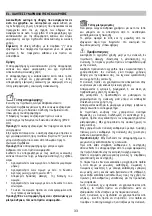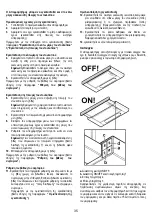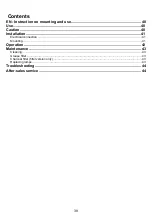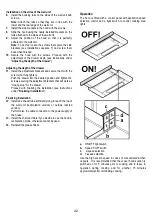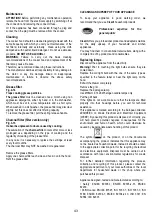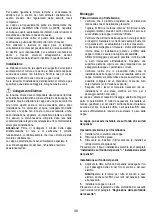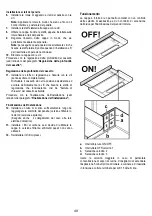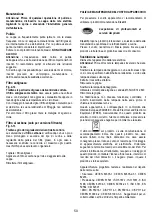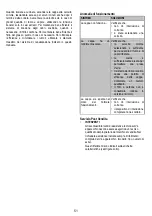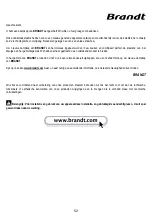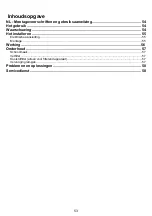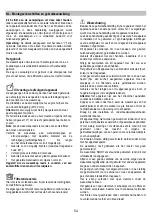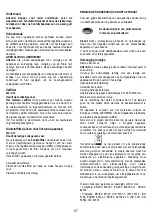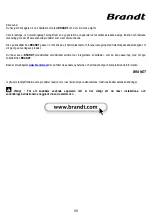
44
• EMC: EN 55014-1; CISPR 14-1; EN 55014-2; CISPR 14-2;
EN/IEC 61000-3-2; EN/IEC 61000-3-3. Suggestions for a
correct use in order to reduce the environmental impact:
Switch ON the hood at minimum speed when you start
cooking and kept it running for few minutes after cooking is
finished. Increase the speed only in case of large amount of
smoke and vapour and use boost speed(s) only in extreme
situations. Replace the charcoal filter(s) when necessary to
maintain a good odour reduction efficiency. Clean the grease
filter(s) when necessary to maintain a good grease filter
efficiency. Use the maximum diameter of the ducting system
indicated in this manual to optimize efficiency and minimize
noise.
Troubleshooting
SYMPTOMS
SOLUTIONS
The hood is not working... Ensure that:
•
The power is not cut off.
•
A speed has been selected.
The hood is not operating
effectively...
Ensure that:
•
The selected motor speed is
sufficient for the quantity of
smoke and vapours to be
cleared.
•
The kitchen is sufficiently
ventilated to allow for fresh
air intake.
•
The air pipe circuit involves
a lack of efficiency of the
cooker hoods. Contact a
qualified technician.
•
The carbon filter is not worn
(hood operating in recycling
mode).
The hood stopped
working
Ensure that:
•
The power is not cut off.
•
The single-pole cut-off
device was not activated.
After-sales service
Any maintenance on your equipment should be undertaken
by:
- either your dealer,
- or another qualified mechanic who is an authorized agent for
the brand appliances.
When making an appointment, state the full reference of your
equipment (model, type and serialnumber).
This information appears on the manufacturer's nameplate
attached to your equipment.




